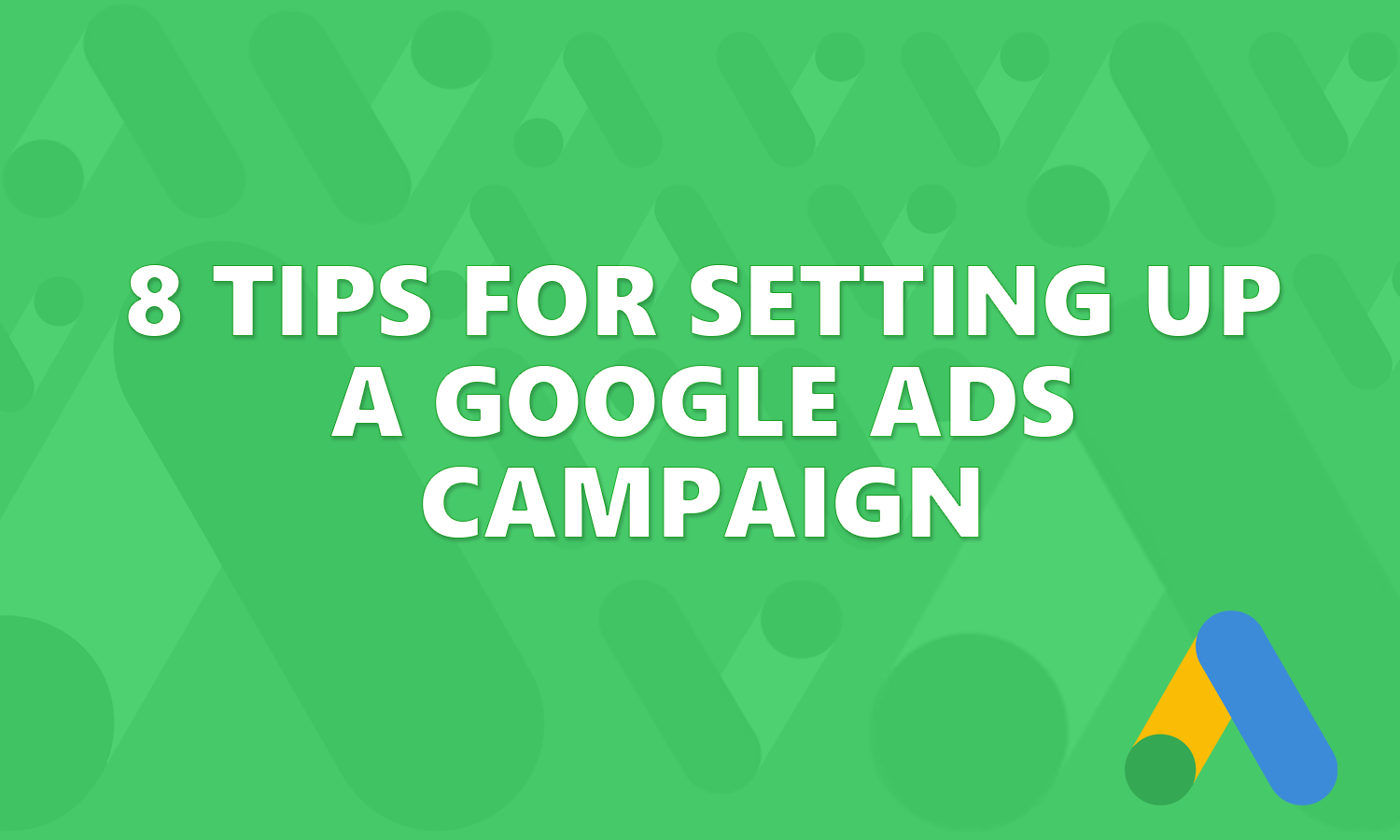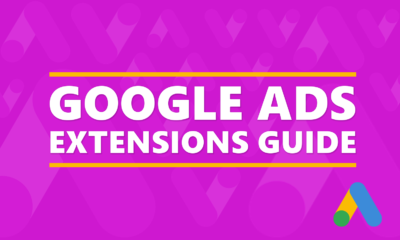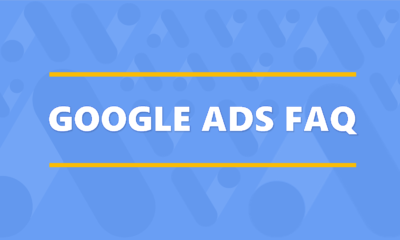1. Define Your Goal
When you begin the process of creating a new campaign, you will be presented different goal options. Selecting a goal will help to focus your campaign on trying to achieve that goal. For example, if the goal of your campaign is to generate leads, then you would choose the ‘Leads’ goal. If your goal is to drive sales, then choose the ‘Sales’ goal.
Learn more about Google Ads campaign goals.

2. Choose Your Campaign Type
Once you choose your goal, you will be shown a few options for different campaign types you can pick from. All of these options can be used to help reach your goal. The campaign type you choose will determine what your ads will look like and where they will show. Google Ads can show up in Google Search (the results you see when you “google it”, Google Display (ads on other websites), Youtube, Gmail, Apps, Search partners and a few others.
Learn more about Google Ads campaign types.
3. Set Your Desired Budget
Setting your budget for a campaign comes next. The budget you set for a campaign is the average daily budget you want to spend for that campaign. This is not set in stone and you can change this whenever you want. If you setup more than one campaign, please remember that each campaign can spend its daily budget. So, if you set campaign 1 at $25 and campaign 2 at $50, then the total spend that day can average $75.
Learn more about Google Ads daily budgets.
4. Pick A Bidding Type
When you choose a campaign goal and select a bid type, Google will show you a few recommended bid types. As an example, if you choose a campaign goal for leads, then Google would recommend a bid type of “conversions”.
Google provides these bid recommendations to try and ensure that your campaign bidding is aligned to meet your specified campaign goal.
It should be noted that you do not have to choose Google’s recommended bid type at this stage. There are other bid types including automated bid strategies. For example, Google has an automated bid strategy called Target Cost Per Acquisition (also known as Target CPA). If you have a cost per conversion (lead) you want to try and target, then choosing this option is a good strategy. For example, if you want your campaign to try and drive leads at a cost per lead of $50, then choosing a $50 Target CPA bid strategy could be a good option for you.
Learn more about automated bidding strategies.
5. Create Extensions For Your Ads
Ad extensions are additional information you can add to your different ad types. Ad extensions can help you to further differentiate your ads from competitors and can help to improve the ad’s clickthrough rate (CTR).
Some ad extensions include a phone number to call, additional links to your website, directions to your business, promotions, images and more. Adding additional extensions to your ads is a best practice and highly recommended.
Learn more about Google Ads extensions
6. Build Out Your Ad Groups
For most campaign types (excluding Performance Ma and Shopping) you will need to add ad groups. Each ad group will contain your ads and keywords. You will want to group your ad groups around homogenous keyword groupings.
Let’s go over a quick example. If you sell shoes, you might create one ad group for high heels, another ad group for athletic shoes and another ad group for sandals.
Learn more about how ad groups work.
7. Choose Your Ad Targeting
Targeting is very important to the success of your campaign. Choose the wrong targeting and you can waste your money. Choose the right targeting and you can find success. In general, you want to choose the type of targeting that will get your ads in front of your desired audience.
Typical types of targeting include geographic targeting, keywords, devices, topics, audiences and remarketing. A common type of targeting for Google Search would be to choose keywords your target audience would use.
If you are a plumbing company then you would want to pick keywords people interested in plumbing services would use for search. For example, you might want to choose keywords such as ‘plumber near me’, ‘local plumbing service’ and ‘water heater repair’. Additionally you would want to choose geographical location targeting where you provide service. If your customer base is within 30 miles of your business address, then you can setup your campaign to show ads in a 30 mile radius.
Learn more about Google Ads targeting.
8. Setup Conversion (Goal) Tracking
Conversion tracking is vital to the success of your campaign. This is how you are able to measure the main goal of your campaign. Setting up conversion tracking is how you can track how many leads or sales your campaign is generating.
By default, Google Ads will show you all kinds of data about your campaign such as the number of clicks and impressions, your clickthrough rate, spend, average cost per click, etc. What it does not show you “out of the box” are conversions. This is something you will want to setup.
Learn more about Google Ads conversion tracking.




